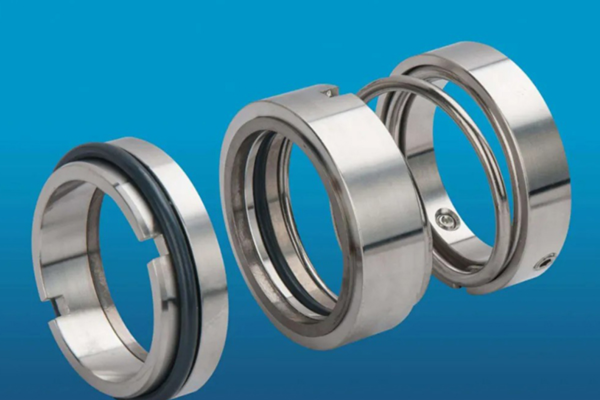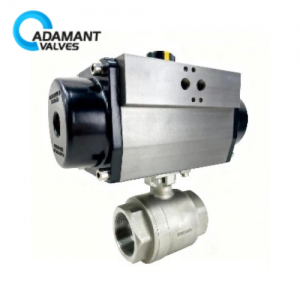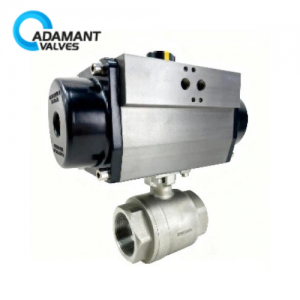Sealing Technology for Sanitary Valves: Dynamic Sealing and Static Sealing

The sealing performance of sanitary valves is crucial, as issues like leakage, spurting, dripping, and seeping often originate here. Based on whether there is relative motion between the sealing surfaces, seals can be categorized into dynamic seals and static seals.
What is a Dynamic Seal?
A dynamic seal refers to a seal achieved between components that have relative motion. In valves, the most critical dynamic seal is the valve stem seal. Its purpose is to prevent the medium inside the valve from leaking to the external environment along the moving valve stem.
1. Stuffing Box Seal
Currently, the stuffing box is the most common method for addressing dynamic sealing of the valve stem. Its basic principle involves filling the “stuffing box” in the valve bonnet with soft sealing material. By compressing this material, it tightly envelops the valve stem, thereby blocking the leakage path.
The gland-type structure is the most widely used for this sealing method. The packing is compressed by tightening the gland bolts to achieve the seal. The design of the gland and bolts may vary depending on the operating conditions.
Core Requirements for Packing:
- Excellent Sealing Performance: Its fundamental purpose.
- Good Corrosion Resistance: To withstand chemical attack from the medium.
- Low Friction Coefficient: To reduce resistance and wear during valve stem movement.
- Adaptability to Temperature and Pressure: To maintain stable performance under operating conditions.
Common Packing Materials:
- Flexible Graphite: High temperature resistance, good self-lubrication, widely used.
- PTFE Braided Packing: Excellent corrosion resistance, very low friction coefficient.
- Asbestos Packing / Oil-Impregnated Asbestos Packing: Traditional materials, usage is decreasing due to environmental concerns.
- Rubber O-rings: Provide good sealing for low-pressure, room temperature applications.
2. Bellows Seal
With the development of industries like chemical and nuclear power, the sealing requirements for flammable, explosive, highly toxic, and radioactive media have become extremely stringent. Under such demanding conditions, traditional packing seals often prove inadequate, leading to the adoption of bellows seals.
Bellows seals use a metal bellows as the sealing element. One end is fixed to the valve body, and the other end is connected to the valve stem. When the valve stem moves up and down, the bellows expands and contracts accordingly. Since the bellows itself is a sealed metal assembly, as long as it remains intact, the medium cannot leak externally.
Bellows seals achieve absolute zero external leakage, offering the highest safety level. However, to ensure complete reliability, a dual sealing design combining a “bellows + packing” is often used.
What is a Static Seal?
A static seal refers to a seal between two stationary mating surfaces. Its task is to prevent medium leakage at fixed connections such as flanges, and between the valve body and bonnet.
Typical Locations:
- Connection between Valve Bonnet and Valve Body: This is the most common static seal in valves, typically using a gasket.
- Interface between Valve Body and Valve Seat: The valve seat is usually pressed or fixed into the valve body; this interface is a static seal.
- Between the Flanges of a Flanged Valve and the Pipeline Flanges: Static sealing is achieved via a gasket.
- Between any two fixed connecting components that require sealing.
Static seals are primarily achieved using gaskets. Common static sealing methods involve the use of washers and gaskets. Gasket materials can be categorized into non-metallic, metallic, and composite materials.
- Non-metallic gasket materials like paper, hemp, and leather, although somewhat permeable, can have their impermeability improved through special treatments like impregnation with oil or wax.
- Asbestos rubber sheets, known for their dense structure and excellent pressure and temperature resistance, are widely used in valve and flange connections.
- Plastic products also offer excellent corrosion resistance and are commonly used, like PTFE.
- Metallic gasket materials are known for their high strength and temperature resistance.
- Composite gasket materials, such as combined wave washers and spiral-wound gaskets, are available options.
In practical applications, gaskets are often replaced based on specific needs and operating conditions to ensure effective sealing. Commonly used gasket types include rubber flat washers, rubber O-rings, plastic flat washers, etc.
How to Choose Sealing Materials
Quick Reference Table for Valve Sealing Technology Material Characteristics
| Sealing Type | Core Material | Temperature Range | Corrosion Resistance | Applications |
| Dynamic Sealing | PTFE | -180 to +260 °C | Excellent (Highly chemically inert) | Packing, seals for corrosion-resistant valves;
Suitable for acids, alkalis, solvents. |
| Flexible Graphite | -200 to +1600 °C (inert atm) | Excellent | Packing for high-temperature & high-pressure valves;
Versatile, resistant to thermal shock. |
|
| Elastomer (e.g., NBR, FKM) | -30 to +200 °C (type-dependent) | Fair – Good (Oil/chemical resistance varies by type) | O-rings, rotary shaft seals for low-pressure, ambient temperature valves. | |
| Metal (e.g., Stainless Steel) | Up to ~400 °C (Bellows) | Good – Excellent (Alloy dependent) | Bellows seals for toxic, radioactive, or zero-leakage applications. | |
| Static Sealing | PTFE | -180 to +260 °C | Excellent (Highly chemically inert) | Gaskets, valve seats for highly corrosive media. |
| Flexible Graphite | -200 to +1600 °C (inert atm) | Excellent | High-temperature & high-pressure flange gaskets; filler for spiral-wound gaskets. | |
| Elastomer (e.g., NBR, EPDM) | -30 to +200 °C (type-dependent) | Fair – Good | Flange gaskets for water, air systems;
Static seals for low-pressure valves. |
|
| Asbestos Rubber | Up to ~500 °C | Good | Traditional gaskets for steam, oil pipelines (declining use due to environmental concerns). | |
| Metal (e.g., SS, Soft Iron) | Up to ~1000 °C | Fair – Good | Metal gaskets, lens rings for high-temperature & high-pressure conditions. | |
| Composite (e.g., Spiral Wound) | Varies (Metal & Filler dependent) | Good – Excellent | High-temperature & high-pressure flanges in petrochemical & power industries;
Widely used. |
PTFE and Flexible Graphite are top-tier materials for both dynamic and static seals, offering excellent corrosion resistance, with graphite providing an unparalleled temperature range.
Elastomers have limitations in temperature and chemical resistance but offer the best sealing performance and cost-effectiveness within their suitable range (e.g., water, air, low-pressure oil).




